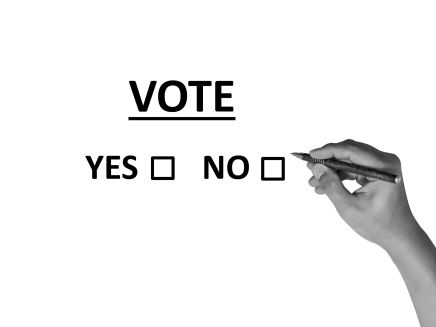Each state has a number of Electors in the Electoral College equal to the sum of its House and Senate delegations. Thus, in the Electoral College, Virginia has 11 members of the House and 2 Senators, so the state selects 13 Electors. Similarly Tennessee has 9+2 = 11 votes; CA 53+2 = 55 votes; and WY: 1+2 = 3 votes.
The allocation of electoral college votes across states creates a small bias towards small states – because each state has two Senators, Wyoming and other states with small populations have more weight in the Electoral College than their population would justify.
The Constitution puts few limits on the ways states might decide whom their electors will be. In practice today most states (all but Nebraska and Maine) allocate ALL of their electors to the candidate who wins the most votes in the state.
° Most states allocate their electoral votes as a bloc to the winner of a plurality of popular votes in their state.
± In 2004 VA had a result of 54% Bush, 46% Kerry, so Bush got all 13 votes.
± In 2008, 2012, and 2016 Democratic candidates won more votes than the Republican candidate, and won all of Virginia’s electoral votes.
± Not understanding this fact can lead voters to do foolish things. For instance, in 2012 this woman ran down her husband with a car because he didn’t vote. The irony is that her favored candidate WON her state (AZ) in the Electoral College, so there is no way that her husband’s failure to vote could have made a difference in the outcome she disliked – Mitt Romney lost to Barack Obama in the Electoral College, but all of Arizona’s electoral votes went to Romney.
° Maine and Nebraska allocate some electoral votes by Congressional District. Thus, in 2016 Donald Trump won the 2nd Congressional District in Maine and one electoral vote even as Hillary Clinton won a state-wide majority and the other three of Maine’s electoral votes.
° One proposal to replace the Electoral College is based primarily on the ability of states to select whatever electors they choose. The National Popular Vote compact is an agreement among states that will go into effect if the states that have signed on constitute a majority of the Electoral College. The compact is an agreement that these states will allocate their electors on the basis of the national popular vote, even if that candidate lost in some of their states.

